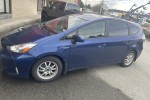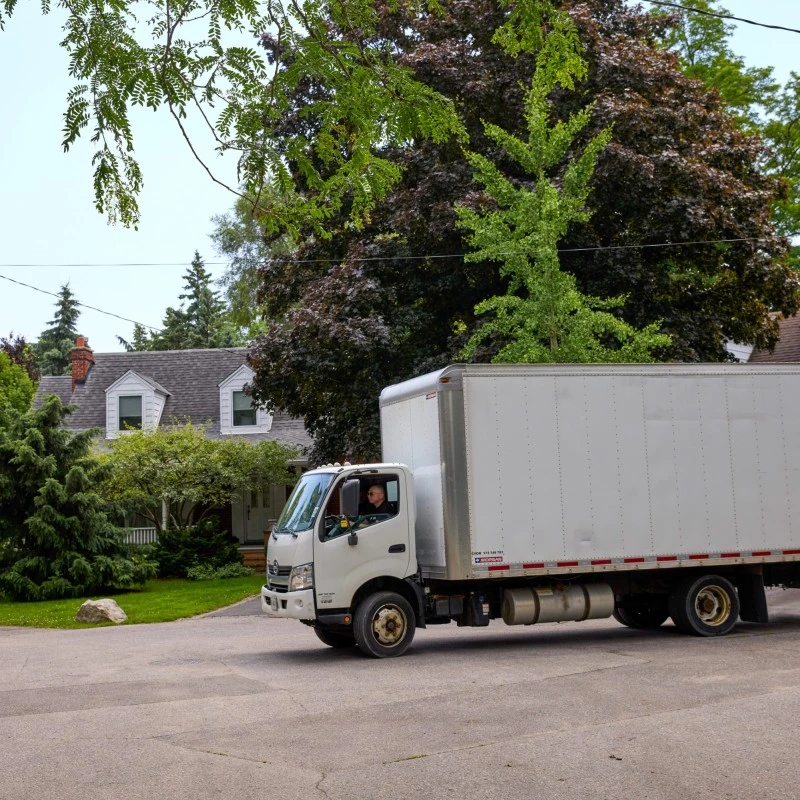
Travel options in Canada vary widely, offering everything from convenience to adventure and budget-friendly to luxurious experiences. Let’s explore how to get around.
Getting around Canada promises to deliver spectacular scenery and unmatched natural beauty. Landmarks and heritage sights can be found in every province. Canada’s national and provincial parks are perfect for outdoor adventurists and nature lovers, and historic cities are filled with old-time architecture and museums. Indigenous heritage sites are rich with cultural history and are an important part of the country’s aim at truth and reconciliation.
Each method of travel has its own benefits, and it may be worth trying out a few different options to get the full Canadian experience.
Getting around Canada - Modes of travel
Being the second largest country in the world, travelling throughout Canada usually involves covering a lot of land.
Along with driving yourself, Canada offers convenient coach buses, train routes, ferries and air travel for getting around. For the more budget-conscious types, there are popular rideshare and carpooling forums online. Rideshares are a great way to meet locals and save a few bucks.
In addition, if you’re looking for adventure, The Trans Canada Trail is a vast system of trails, waterways and roads that extends over 28,000 km.
Designed to be enjoyed by walkers, cyclists, hikers, skiers, horseback riders, and, in some sections, canoeists and kayakers, the trail offers a unique way to explore the diverse landscapes and cultural heritages of Canada.
The TCT connects the Pacific, Atlantic and Arctic oceans and is the longest recreational trail network in the world.
Driving in Canada - a terrific way to see the sights (car travel photo)
Travelling in Canada by car is by far the most flexible way to travel and see the sights. Car travel allows for exploring areas off the beaten path on your own schedule. However, just remember that North Americans drive on the right side of the road, so there might be a slight learning curve for some.
If you need to get from point A to point B, the Trans-Canada Highway is going to be the fastest way to travel by car. The TCH is a network of highways consisting of Highway 1 in British Columbia, Alberta, Saskatchewan, and Manitoba, Highways 17 and 417 in Ontario, Autoroutes 40, 25, 20 and 85 in Quebec, Highway 2 in New Brunswick, Highways 104 and 105 in Nova Scotia and Highway 1 in Newfoundland.
If you’re not in a rush, there are other networks of highways throughout Canada offering diverse, slightly longer scenic routes.
Renting a car in Canada
Renting a vehicle in Canada is as straightforward as it gets. You can rent in one location and drop the car off when you reach your final destination.
Combining car rentals and air travel is a decent way to travel across provinces and between cities, allowing for more time to explore popular specific spots.
Heavy traffic in major cities can be a headache, so many travellers choose to use a rental car to get from city to city and then use public transit once they are in the city.
Buying a used car in Canada
Decent used vehicles can be found in Canada for anywhere from $5000 upwards. If you are travelling in Canada for more than a couple of months, buying a used car may be the most economical option to get around. The buying process is simple, and inspections and insurance are easy to obtain.
You can also purchase your car from anywhere and have it delivered to you at the airport using topmove.ca - the leading car transport company in Canada.
Carpooling in Canada
Canada has several websites for carpooling. You can sign up as a passenger looking for a ride, or as a driver offering seats. Carpooling has benefits such as flexibility - you choose when and how far you want to travel. Carpooling is not only economical, it’s good for the environment as well.
For female travellers who decide to carpool, it’s important to exercise caution. Make sure the carpooling websites and services you use are verified, share your trip details with a friend, and trust your instincts. Carpooling websites often have their own safety tips and recommendations.
Travelling in Canada by bus

Taking the bus between cities in Canada is an uncomplicated way to travel; however, it is considerably slower than driving or flying.
On the plus side, booking tickets with regional coach bus companies is simple and allows lots of flexibility in travel times and dates. Canadian coach lines offer comfortable seats with Wi-Fi, movies, air conditioning, and bathrooms.
For longer trips, buses will stop at service stations every few hours where simple meals are available.
Bus ticket prices vary, and often, it is similar in price to fly instead. Just like when purchasing flight tickets, it’s best to book ahead for bus reservations to guarantee your seat.
Train travel in Canada
 Travelling by train in Canada is a luxury, but the extra costs are worth it. Seeing Canada’s landscapes at a slower pace is the perfect way to take it all in. Our train routes are also usually more impressive and beautiful than the public roads or highways.
Travelling by train in Canada is a luxury, but the extra costs are worth it. Seeing Canada’s landscapes at a slower pace is the perfect way to take it all in. Our train routes are also usually more impressive and beautiful than the public roads or highways.
What’s more, trains are comfortable and fun– so opting for a train ride is sure to make your trip more memorable.
Canada has a handful of bigger train companies and smaller localised routes as well. Book your tickets well in advance to guarantee your seats.
VIA Rail
Canadian - this is the longest train route, running from the B.C.’s coast all the way to Ontario. The Canadian connects Vancouver, Jasper, Winnipeg and Toronto.
- Ocėan - This eastern route connects Montreal and Halifax.
- Skeena - This route starts in the Rocky Mountains in Jasper. It travels to northern B.C., stopping in Prince George and goes all the way to the coast to Prince Rupert. NOTE: Prince Rupert is where you can catch the ferry to Haida Gwaii. Haida Gwaii is an incredibly beautiful, very remote archipelago of islands known for its ancient Haida culture, lush rainforests and coastal wildlife.
- Hudson Bay - This route connects Winnipeg with the arctic city of Churchill, Manitoba. Other Via Rail routes include:
- Toronto - Ottawa - Montreal - Quebec
- Toronto - Niagara Falls (this route is also offered by Go Transit).
Ontario Northland runs a train from Toronto - to North Cochrane - to Moosonee. AmTrak is an American train service that connects the USA with Vancouver and Montreal.
 Train Routes in Canada (Seat61.com)
Train Routes in Canada (Seat61.com)
Air Travel in Canada
Domestic flights through Air Canada and WestJet used to be pricey and inaccessible to many Canadians. However, 18 years ago, Flair (a subsidiary of Air Canada) came into the picture, and more recently, Swoop. These smaller airlines offer domestic flights at more affordable rates, making air travel a viable option for long-distance domestic travel.
Canada is huge. If you are travelling from coast to coast or even just across the prairies, taking a plane is 100% worth it.
Taking the Ferry in Canada

There are over 180 different ferry routes across Canada, and ferry travel is a fun and beautiful way to see the waterways. Canadian ferries are both privately and publicly owned, depending on the routes. Ferries are an integral part of Canadian travel and freight, and ferries are considered part of the highway systems.
Ferry travel is a unique way to spot marine wildlife such as whales, eagles and sometimes even porpoises.
BC Ferries connecting Vancouver and Vancouver Island have almost reached cruise-ship status. On their 1.5-hr sailings, you can find restaurants, lounges, kids' play areas, arcades, and gift shops.
Longer distance ferries such as the Port Hardy, BC - Haida Gwaii route is 2.5 days in duration and offer sleeping cabins on the main decks. These cabins must be reserved in advance.
The Northumberland ferry is 75 minutes long and connects the provinces of Nova Scotia and Prince Edward Island, while the Marine Atlantic ferry that connects Nova Scotia to Newfoundland is normally an 8-hour journey. The trip is a little longer during the storm season.
In 2023, BC Ferries introduced a foot-passenger-only ferry connecting the cities of Nanaimo and Vancouver. Vancouver traffic is highly congested and this ferry gives Vancouver Island residents an opportunity to reach Vancouver for medical appointments, shopping and airport access without having to tackle lower mainland traffic.
Tips for ferry travel in Canada
Most ferries allow you to bring your vehicle. There are some smaller ferries to certain islands that only allow foot passengers. While ferries offer availability on a first-come, first-served basis, it is best to reserve your spot ahead of time.
If your furry babies are joining you, pets are allowed on ferries but must stay on the car decks. Walk-on passengers can bring their bicycles as well.
Ticket prices vary depending on the length of the trip, and some coastal and inland ferries are free of charge.
Naturally, travelling as a foot passenger is much less expensive than bringing a vehicle.
The Trans-Canada Trail
Covering over 28,000 km, the Trans Canada Trail spans Canada and connects the Pacific, Atlantic and Arctic oceans through trails, waterways and roads. Canadians and tourists alike enjoy the trail for walking, hiking, cycling, paddling, horseback riding, cross-country skiing and snowmobiling.
The TCT goes through urban centres, rural communities and Indigenous territories and is a unique way for adventurists to explore parts of Canada they would otherwise miss in a car or train. Canadians are big on outdoor adventure and gear and supplies are available in every city and town. Washrooms, picnic facilities and benches are found throughout the trail.  The Trans Canada Trail
The Trans Canada Trail
There is no wrong way to travel in Canada
Canada’s options for domestic travel allow you to choose your own pace depending on your needs. Canada’s extensive routes and networks provide schedule flexibility, affordability, speed, leisure and sightseeing. When it comes to travelling around Canada, your travel choices inform your experiences so that you can get the most out of your trip.
What do our customers say?





























